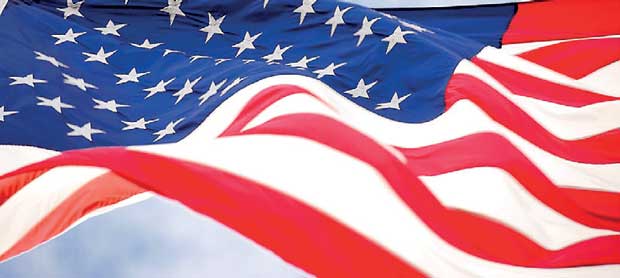23 Feb 2017 - {{hitsCtrl.values.hits}}

 President Trump’s ‘America First’ doctrine is a vigorous argument to change the United States’ actions at home and abroad while departing from the US post-war order that Trump argues left many US workers behind. This markedly different platform has created uncertainty in regional affairs, giving policymakers in Washington and elsewhere plenty of consternation as they strive to adjust.
President Trump’s ‘America First’ doctrine is a vigorous argument to change the United States’ actions at home and abroad while departing from the US post-war order that Trump argues left many US workers behind. This markedly different platform has created uncertainty in regional affairs, giving policymakers in Washington and elsewhere plenty of consternation as they strive to adjust.
Trump’s disrespectful treatment of Australian Prime Minister Malcolm Turnbull during their phone discussion covering the refugee resettlement agreement on January 28 made headlines around the world. It rattled nerves and left many confused as to what ‘America First’ meant for the US policy in the Asia Pacific.
Yet as is the case with any new administration, the key members of Trump’s team are vying for influence. Some — most notably Defence Secretary James Mattis and Secretary of State Rex Tillerson — are striving to mould ‘America First’ into something reflective of traditional US foreign policy norms.
Mattis and Tillerson’s pragmatic approach of shoring up alliances and meeting US security commitments in the region reflect the Republican foreign policy establishment. It will likely prevail in generating support on Capitol Hill and in shaping the Trump administration’s policy in the Asia Pacific. An example is Trump’s warm welcome of Japanese Prime Minister Shinzo Abe to Palm Beach, Florida for golf diplomacy and joint statements condemning the February 12 North Korean ballistic missile test.
Tillerson also hosted his Japanese counterpart, Foreign Minister Fumio Kishida, at the State Department on February 10, pledging to enhance the US–Japan alliance. He reaffirmed Washington’s commitment that the Japanese-administered Senkaku Islands — claimed by China — are covered by Article 5 of the US–Japan Security Treaty. Both Trump and Tillerson also discussed China’s militarisation of the South China Sea and cited the importance of working together on the North Korean nuclear threat and towards improving economic relations between Washington and Tokyo.
These initial steps by the Trump administration provide relief for globalists and Asian partners, as ‘America First’ looks set to follow closely the traditional US security and geopolitical commitments in the region, while limiting policy changes to trade. The recent geopolitical rumblings in Asia look set to solidify this stance.
North Korea’s advancing nuclear weapons programme and February 12 test launch of intercontinental ballistic missiles demonstrates the rising urgency of Pyongyang’s threat. Its new capability to conduct a nuclear strike on the US west coast presents an unacceptable risk to a growing number of policymakers in Washington, raising the chance of pre-emptive US military action. This development underscores the continued need for Washington’s defence treaties with Seoul and Tokyo. So the Trump administration is unlikely to follow through on their campaign statements about reneging on both of these vital alliances given the gravity of Pyongyang’s nuclear threat.
This is also a time of strained relations between Washington and Beijing. There are disagreements involving Beijing’s assertions of sovereignty over the South China Sea and tensions about trade, cyber warfare and China’s military modernisation. China is the only country that poses a military, geopolitical and economic threat to the United States, and this reality ensures that Washington’s partnerships in the Asia Pacific will remain during the ‘America First’ era.
An early example of this was Mattis’ choice to visit Japan and South Korea for his first foreign trip as head of the Pentagon. During his visit he accused China of having ‘shredded the trust of nations in the region’ and told Tokyo that the United States stands ‘shoulder to shoulder with Japan’. While in Seoul, Mattis committed to an ‘effective and overwhelming response’ to North
Korean aggression.
Mattis also added that US defence commitments in the region were ‘ironclad’ and told Japanese Defence Minister Tomomi Inada that Japan was ‘a model of cost sharing’ for its alliance with the US. A deepening of relations with India, Australia and key Southeast Asian states is
likely to follow.
The burgeoning US–India relationship is vital for making headway on issues of mutual concern such as border and maritime disputes with China, Islamic terror and the militarisation of space. India’s young population and growing markets, along with its shared democratic values and strategic interests with the United States will help ensure that Washington and New Delhi remain partners amid Trump’s pursuit of ‘America First’.
Southeast Asia’s population of 625 million, combined GDP of US $ 2.8 trillion and strategic geography hold great promise for US corporations and workers. It also presents opportunities for military, intelligence and geopolitical collaboration that even an ‘America First’ administration cannot ignore. The existing relationships with Singapore, Vietnam, Indonesia and to a lesser extent, Thailand and Malaysia, will likely be strengthened, each focusing on the challenges posed by China’s rise.
While ‘America First’ serves as a break from the past — particularly in trade policy — it is improbable that it will radically shake up ties with the Asia Pacific partners. To do so would be abandoning the investment that the United States has placed in the region during the post-war era. The North Korean nuclear threat, China’s ascent and the collaborative opportunities with India and Southeast Asia will constrain the new administration’s isolationist tendencies and assure Washington’s continued involvement in the region.
(Courtesy East Asia Forum)
(Ted Gover is Instructor of Political Science at Central Texas College, Camp Pendleton, California)
09 Jan 2025 28 minute ago
09 Jan 2025 2 hours ago
09 Jan 2025 3 hours ago
09 Jan 2025 3 hours ago
09 Jan 2025 3 hours ago